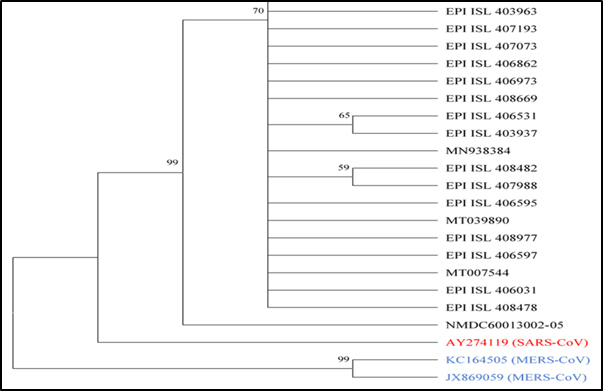One of the most efficient catalysts researched for industrial-scale catalysis are enzyme because of their multiple advantages lies in their controlling process to specificity along with their less eco-friendly nature. Due to the presence of all these characteristics in the industry, the handling cost reduces when they are used as biocatalysts in different biochemical processes.
The advantages of enzymes have been partially realized by pharmaceutical, fabrication, food, and beverage, industries. In other industries like natural gas conversion and biofuel production also It was proven the potential of enzymes. However, some disadvantages are also lines with enzymes in industries like the application of them at high-temperature processes or turbulent flow regimes due to their stability issues, use in toxic solvents. That is why concentrated techniques across different sectors are concentrating on identification and generation of robust, thermostable, biocatalysts appropriate for use in a wider range of industries. The under the mentioned table we have mention use of some enzyme in the industry:
|
Pharmaceuticals |
Nitrile hydratase, monoamine oxidase, lipase, penicillin acylase, transaminase |
To generate active pharmaceutical ingredients intermediates |
|
Food Processing |
Pectinase, amylase, isomerase, Trypsin, glucose papain. |
starch to glucose production, generation |
|
Detergent |
amylase, cellulase, Protease, lipase |
removal of Stains, oils and fats removal, retention of color |
|
Biofuels |
Lipase, xylanase, cellulase |
generation of fatty acid methyl esters, degradation of lignocellulosic material to produce bioethanol |
|
Paper and Pulp |
Lipase, xylanase, cellulase |
Lignin Removal for better bleaching efficiency. |
Application of enzymes in Industrial Catalysis
Pharmaceuticals Industry: For quite a long time, pharmaceutically active chemical productions are facilitated by the enzyme catalysis technique successfully at the industrial scale. Due to the presence of high regional, chemical, and stereo selectivities of the substrate to product conversion the enzyme catalysis became most appropriate in this sector. Product specificity is essential in a pharmaceutical method due to the streamlining of product synthesis ways followed by economic process improvement. Use of enzyme not only required here but also provide a higher production rate.
Fuel industry: Biofuel like bioalcohols, biosynthetic oils, biodiesel, and biogas considered as the supplement for fossil fuel and these have already proved its potentials. Thus to meet the global need demands are sky rocked throughout the world. Not only that production of economically feasible biofuel has double benefits it is better sustainable than the fossil one and better eco-friendly concerning the emission of carbon monoxide, nitrogen oxides, sulfur oxides, and particulate matter, etc. this production rises every year. Thus usage of enzymes also increases with that.
Bakery industry: Major of the application of enzymes found in the food industry since the mid 20th century. Earlier, the enzyme used in these industries was mainly generated from animal and plant resources. Currently, they are derived from microbial fermentation. For example use of glucoamylase to produce better yields of glucose from starch. The process replaces the old acid hydrolysis method by reducing production cost. One enzyme used in food processing industries are protease, lipase, esterase, oxidoreductase, and isomerize, etc.
Dairy processing industry: Two major enzymes used in the dairy industry are catalase and lactase. Catalase used to remove excess H2O2 which is due to kill pathogens in milk. Use of Lactase reduces the lactose content to prepare low lactose milk where milk flavor, sweetness and nutritional value all are increased.
Meat product processing: To improve the product quality in terms of taste, color, smell, etc, and increase the added value through by-products enzyme is used in the meat industry.
The industrial usage of enzyme accelerates due to the immobilized enzyme:
Advancement in enzyme immobilization, i.e., the add-on of the biocatalyst with a material having required chemical, physical, electrical, or mechanical properties, has shown that improvement in their activity and stability for a wide range of industrial conditions. In this field of application immobilized enzymes are quite novel and the process includes fewer processing steps.
Sometime, the benefits of immobilized enzymes must be huge to find betterment over the economics of free enzyme-catalyzed techniques which comes with a high capacity of reusability. Moreover, those must be associated with the proper function of an enzyme in the presence of an appropriate substrate.
Encapsulation or entrapment, carrier-bound attachment, and the formation of cross-linked enzyme aggregates these are the three main techniques currently used in the enzyme immobilization. Two main kinetic parameters need to find out for an immobilized enzyme to understand the efficiency of immobilization on the catalytic efficiency of the enzyme. They are maximal reaction velocity or Vmax and Michaelis constant or Km. the rate of enzyme –substrate-binding affinity and Vmax provides the rate of reaction at a specific moment. Low Km value suggests a better binding affinity between enzyme-substrate and higher suggests lesser binding affinity.
Assessment of environmental impact for enzyme implementation in the industry:
Environmental evaluation of immobilized enzyme is highly required while implementing them as biocatalyst as they are released into nature after a certain period in a bulk amount after usage. With is an aspect the life-cycle assessments and techno-economic analyses are highly important tools to assess these immobilized enzymes for commercial usage. life-cycle assessments or LCAs used to analyze the amount of energy and material used in the industry and the amount of waste and emission generated by the industry during the product formation. AS most of the cases use of enzyme positively related to the reduced usage of chemical inputs, energy, and waste streams. It is also noticed that the use of Immobilized enzyme-catalyzed technique decreased the environmental burden concerning the free enzyme-catalyzed processes. Techno-economic analyses or TEAs study the economic feasibility of the new process based on technology availability and process cost such as feedstocks, utilities, labor, and capital investments, etc.
This market is growing rapidly throughout the world. A biochemist is the most preferable candidate as an enzymologist in any of this industry. Thus it’s a golden opportunity to fix your target and enter into the specific path to achieve the goal.





